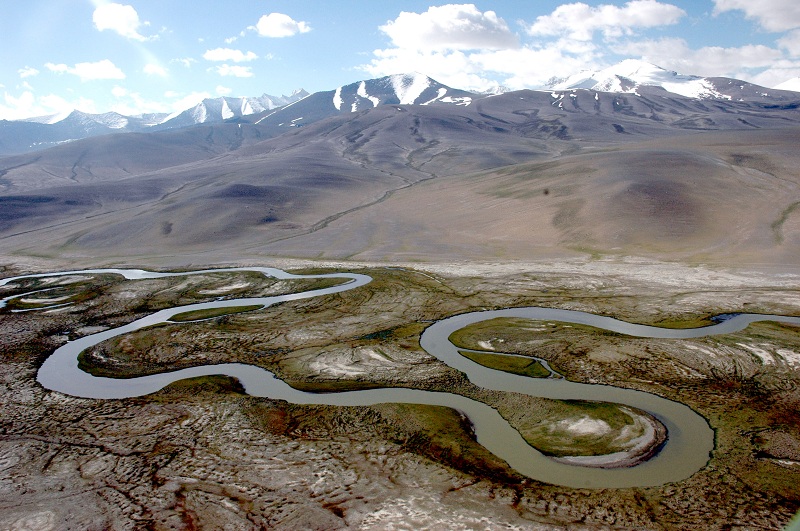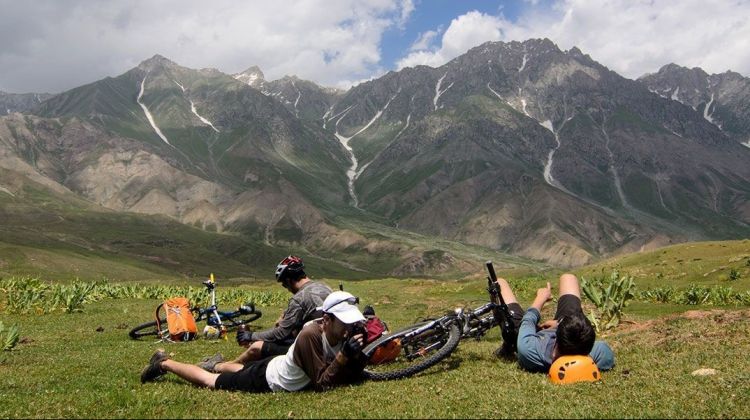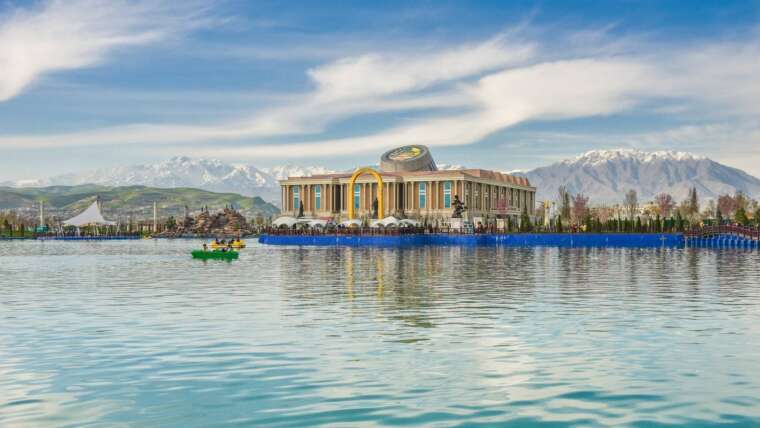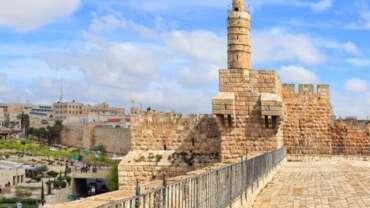Tajikistan: Feel the Friendship
Tajikistan is a Central Asian which is not such a major center of tourism as for example Turkey . But it does not mean that there are fewer tourists wishing to come there to spend a vacation. They are mainly attracted by the exotic of this country, its customs and traditions which have been preserved untouched in its secluded corners since ancient times. If you go up in the mountains you will have a chance to find really small villages where live unique nationalities – the descendants of Alexander the Great who conquered this territory. In this way you’ll be able to experience a spirit of antiquity and ancient history. Tourists travel to Tajikistan in order to get indelible impressions from fabulous and even wild virgin nature. The Pamir , the Tien Shan and Fan Mountains are regarded as “resorts” of Tajikistan. These fantastic places are attractive to those who prefer active travels with a touch of extreme to boring beach vacation.
There is a lot to see there indeed: snowy mountain caps on the background of dazzling blue sky, green fertile valleys with blooming gardens, rough mountain streams bubbling with white foam in narrow gorges. Even in America it is hard to find such quick flowing rivers with rapids. Have you thought of rafting there? Adrenaline won’t go away for the next year. And the canyons?! Sharp, enormous, forbidden. Even a Hollywood movie cannot show those. The fans of rafting and mountaineering consider Tajikistan an ideal place for those who are up to active and dynamic vacations.
In Tajikistan there are many historical cities and monuments which any tourist will look at with awe. Another irresistible attraction is the national cuisine – a special topic for conversation. Tajik cuisine is famous worldwide! Moreover, there you will be treated with the most delicious fruit and vegetables grown not in artificial hothouses but in natural fertile Tajik soil – juicy and sweet as honey.
Hospitable Tajik people never say good bye to their guests without treating them with some gifts. You will take home with you not only bright impressions but also loads of hand crafted souvenirs from ceramics, wood, glass, fabrics. Local craftsmen have ke pt the secrets of their arts for many generations.
So as you can see Tajikistan is a unique country. Th ere is nothing there that is fake, made on purpose or borrowed from other cultures . The civilization has not entangled this country in its cobweb yet. You won’t find noisy mega polises, highways, annoying neon advertis ements. Mother Nature reigns there. And if you want to meet her on your own – welcome to Tajikistan.
History of Tajikistan
Early history and Islamic period
The Tajiks are the direct descendants of the Iranian peoples whose continuous presence in Central Asia and northern Afghanistan is attested from the middle of the 1st millennium BCE. The ancestors of the Tajiks constituted the core of the ancient population of Khwārezm (Khorezm) and Bactria, which formed part of Transoxania (Sogdiana). They were included in the empires of Persia and Alexander the Great, and they intermingled with such later invaders as the Kushāns and Hepthalites in the 1st–6th centuries CE. Over the course of time, the eastern Iranian dialect that was used by the ancient Tajiks eventually gave way to Farsi, a western dialect spoken in Iran and Afghanistan.
The Arab conquest of Central Asia that began in the mid-7th century brought Islam to the region. But tribal feuds weakened the Arabs, and, with the rise of the Sāmānids (819–999), the Tajiks came under the rule of an Iranian dynasty. The first Turkic invaders (from the northeast) seized this area of Transoxania in 999, and, because both conquered and conquerors were Muslim, in time many Tajiks—especially those in the valleys of the Syr Darya and Amu Darya—became Turkicized. This resulted in the transformation of a formerly purely Iranian land into “Turkistan.” The name Tajik, originally given to the Arabs by the local population, came to be applied by Turkic invaders and overlords to those elements of the sedentary population that continued to speak Iranian languages.
Until the mid-18th century the Tajiks were part of the emirate of Bukhara, but then the Afghans conquered lands south and southwest of the Amu Darya with their Tajik population, including the city of Balkh, an ancient Tajik cultural centre.
Russian imperialism and the Soviet era
Russian conquests in Central Asia in the 1860s and ’70s brought a number of Tajiks in the Zeravshan and Fergana valleys under the direct government of Russia, while the emirate of Bukhara in effect became a Russian protectorate in 1868.
After the Russian Revolution of 1917, a considerable proportion of the Tajik people was included in the Turkestan A.S.S.R. established in April 1918. In August 1920 the Revolution was extended to the khanate of Bukhara, which embraced most of the territory occupied by modern Tajikistan; the Bukharan People’s Soviet Republic was declared in October 1920, and early in 1921 the Soviet army captured Dushanbe and Kŭlob (Kulyab). Tajikistan was the scene of the Basmachi revolt in 1922–23, and rebel bands under Ibrahim Bek operated in eastern Bukhara until 1931. The Tajik A.S.S.R. was created as part of the Uzbek Soviet Socialist Republic (S.S.R.) in 1925; in January 1925 a Special Pamirs region was created out of the Kyrgyz and Tajik parts of the Pamirs, and in December 1925 this region was renamed the Gorno-Badakhshan autonomous region. In 1929 the status of the Tajik A.S.S.R. was raised to that of a Soviet socialist republic. The change in status marked the first time that the Tajik people had their own state, albeit not a fully independent one, as it was still part of the Soviet Union.
As a full-fledged member of the Soviet Union, the underdeveloped, mountainous Tajik S.S.R. underwent a spectacular social and economic transformation. A sense of nationhood was instilled in the Tajik people—particularly by B.G. Gafurov, the leader of Tajikistan’s Communist Party from 1946 to 1956 and a historian respected in the West. Dams were constructed for electric power generation and irrigation, and industry was developed in the Vakhsh River valley. Soviet health care and education were gradually introduced in the republic. The village of Dushanbe (known as Stalinabad from 1929 to 1961) was transformed into a modern capital city boasting the Tajik State University (1951) and the Tajik Academy of Sciences (1948). Such progress notwithstanding, Tajikistan remained the poorest republic of the Soviet Union.
Independence – Civil war
The disintegration of the Soviet Union in 1991 led to the somewhat reluctant declaration of full independence on September 9, 1991. Once independence was achieved, turmoil—degenerating into civil war—plagued the new country; communists fought to retain power in the face of opposition from an alliance of Islamic and democratic forces. The presidential election of November 1991 was won by Tajikistan’s former communist strongman Rahman Nabiyev, and in March 1992 massive nonviolent demonstrations protesting his dismissal of opposition elements began in Dushanbe. After government forces opened fire on the demonstrators in April, violence soon spread to the southern city of Kŭlob and elsewhere. Opposition forces drove Nabiyev from office in September and briefly took power, but by November a government led by Emomali Rahmonov (from March 2007, Emomali Rahmon) and backed by Russian troops had regained control, ending the first phase of the civil war. A mass exodus to Afghanistan followed. Sporadic fighting continued as the Islamic fundamentalist forces and their allies, now based in Afghanistan, continued to launch attacks on the Russian and Tajik troops guarding the border.
After his electoral victory in 1999, Rahmonov sought to establish the authority of the central government throughout Tajikistan, arresting some regional warlords and carrying out a campaign to disarm non-state militias. He also began what many observers saw as a drift toward authoritarianism, using the presidency to increase his personal power and steer the country away from the political pluralism called for by the 1997 peace agreement. The U.S.-led war against the Taliban in Afghanistan in 2001 provided Rahmonov with a favourable climate for a crackdown against the Islamic opposition in Tajikistan. He accused the Islamic Renaissance Party of Tajikistan (IRPT)—which under the peace agreement was one of the opposition groups entitled to a percentage of government posts—of extremism and began dismissing members of the party from their official positions. The party itself, however, remained legal in Tajikistan. Meanwhile, Rahmonov began to install his extended family and personal associates in dominant roles in politics and business in Tajikistan.
In 2003 Rahmonov’s position was strengthened when voters approved a referendum on a package of constitutional amendments that Rahmonov had requested as necessary to modernize the country. These included an amendment loosening presidential term limits, which made it possible for Rahmonov to hold the presidency until 2020.
The suppression of opposition parties and the muzzling of independent media intensified in the run-up to the legislative elections held in February 2005. Independent newspapers were closed, and opposition parties reported that local election boards had refused to place many of their candidates on the ballot. The final result was a lopsided victory for Rahmonov’s People’s Democratic Party, which won 52 of the 63 seats in the Assembly of Representatives.
Rahmonov himself was easily elected to another seven-year term as president with nearly 80 percent of the vote in November 2006. The IRPT, the largest opposition party, had not to fielded a presidential candidate after longtime party head Said Abdullo Nuri died earlier in year. Several other opposition parties nominated candidates, but the parties were too small and poorly known to pose a threat to Rahmonov.
In March 2007 Rahmonov dropped the Russian suffix (-ov) from his surname as an acknowledgment of Tajik identity. The change initiated a trend of “Tajikization” of surnames that was followed by many senior members of the government.
Rahmon won another term as president on November 6, 2013. A coalition of opposition parties and groups, including the IRPT, had attempted to nominate a candidate, but harassment by the authorities prevented her name from reaching the ballot. Five other parties were able to get their candidates on the ballot, but none were well-known enough to receive significant support.
In September 2015 the government banned the IRPT—until then the only legal Islamist party in the former Soviet republics of Central Asia—and placed it on a list of extremist and terrorist organizations. Several of the party’s leaders were later charged with having orchestrated a coup attempt in 2015 and were sentenced to life imprisonment in 2016 in a case that IRPT supporters and human rights groups denounced as politically motivated.
Meanwhile, seeking to capitalize on the country’s rich resources for hydroelectric energy, Tajikistan resumed work in 2016 on the long-awaited Rogun Dam, whose initial construction had been halted after the collapse of the Soviet Union and was heavily damaged in a flood in 1993. Upon its completion, the dam is expected to be the highest and tallest in the world and to double Tajikistan’s electricity-generating capacity. The project was once a source of tension with Uzbekistan downstream, but Uzbekistan dropped its opposition to the dam in early 2018 amid warming relations between the two countries. On November 16, 2018, Rahmon inaugurated the first unit of the dam, which began producing electricity even as construction continued. Representatives from Uzbekistan attended the ceremony.
One-party rule
In May 2016 voters in Tajikistan approved a referendum on a package of constitutional changes that included lifting term limits for President Rahmon and lowering the minimum age for presidential candidates from 35 to 30. The amendments further strengthened the Rahmon family’s already tight grip on power; the amendment concerning presidential term limits had been written to apply only to Rahmon, based on his special status as “Leader of the Nation” granted by the Assembly of Representatives in 2015, and the amendment concerning the age of presidential candidates was widely seen as a way to clear a path to the presidency for Rahmon’s son Rustam Emomali, who then became eligible for the presidency in late 2017. In 2020 he became chairman of the National Assembly, making him first in the presidential line of succession.
Another amendment in the 2016 referendum banned all political parties based on religion, imposing an additional obstacle for the opposition to reconstitute itself. In October 2020, with the main opposition fully sidelined, Rahmon won another presidential election without significant contest.
People of Tajikistan
Ethnic Groups
The area’s population is ethnically mixed, as it has been for centuries, but more than four-fifths of the population is ethnically Tajik, a proportion that rose with the emigration of non-Tajiks during the protracted civil war. The Tajiks are a traditionally sedentary people who speak a form of Persian (called Tajik) and whose culture has been significantly influenced by Central Asian sedentary culture. The name Tajik came to denote a distinct nationality only in the modern period; not until the 1920s did an official Tajik territorial-administrative unit exist under that name. Citizens of Tajikistan, regardless of ethnicity, are referred to as Tajikistanis.
On the basis of language, customs, and other traits, the Tajiks can be subdivided into a number of distinct groups. The Pamir Tajiks within the Gorno-Badakhshan autonomous region include minority peoples speaking Wakhī, Shughnī, Rōshānī, Khufī, Yāzgulāmī, Ishkashimī, and Bartang, all Iranian languages. Another distinct group is formed by the Yaghnābīs, direct descendants of the ancient Sogdians, who live in the Zeravshan River basin.
So closely are the Tajiks mixed with neighbouring Uzbeks that the Soviet partition of the area in 1924 failed to segregate the two nationalities with any degree of thoroughness. With nearly one million Tajiks in Uzbekistan and more than one million Uzbeks in Tajikistan, these nationalities remain in intimate, though not always friendly, interrelation. The country’s other ethnic groups include Russians, Tatars, Kyrgyz, Ukrainians, Germans, Jews, and Armenians.
Languages
Tajik is the official language and is spoken by most people in Tajikistan. A member of the southwest group of Iranian languages, it is closely related to the mutually intelligible dialects of Farsi and Dari in Iran and Afghanistan, respectively, though it differs from these dialects in that it is written in the Cyrillic alphabet. The dialects of the Pamirs and the Yaghnob River valley, which were classified as Tajik during the Soviet era, actually belong to the eastern group of Iranian languages; speakers of these dialects must use Tajik as a lingua franca to communicate with outsiders. Russian is widely used for administration and business, but few speak it natively. Uzbek is the second most widely spoken language and is written in the Cyrillic script, unlike in Uzbekistan where Uzbek is written in a modified Latin alphabet.
Religion
The vast majority of Tajikistanis are Muslim, mostly of the Sunni Ḥanafī school. A small percentage of Muslims are Ismaʿīlī Shiʿi, located primarily in the Pamirs. The Christian population has been predominantly Russian, but most ethnic Russians have left since the disintegration of the Soviet Union.
Cultural Life of Tajikistan
Cultural Life
The area now called Tajikistan has an ancient culture, and many popular traditions and customs have been retained.
Daily life and social customs
Tajik cuisine has noticeable similarities to others in the region, including rice, bread, and meat as staples and the use of subtle spices. Meals begin with drinks, usually green tea, and a spread of fruits, nuts, and sweets. Traditional dishes include osh, seasoned rice with meat and carrots or turnips, and qurutob, which is made by pouring cheese over fatir bread and topping it with onions or other vegetables. Non bread accompanies meals and is treated with significant respect—it cannot be dropped, turned upside down, or have anything placed on top of it.
Tajikistanis celebrate both cultural and religious holidays. The New Year celebration, known as Navrūz (Nōrūz), begins on March 21, during the period of the vernal equinox. Smaller festivals are celebrated upon the first flowering of snowdrops and tulips in the spring. Religious celebrations include Idi Ramazon (see Eid al-Fitr) and Idi Qurbon (see Eid al-Adha). International Women’s Day is a national holiday in Tajikistan.
Literature
Writers from this region have made notable contributions to literature since the 10th century CE, and a vigorous folk literature continues. Tajik literature stems from a broader Persian literary tradition that can be traced back to the poet Rūdakī. Tajiks consider the Shāh-nāmeh to be the national epic and cherish the work of Rūmī. A number of Tajik poets and novelists achieved fame during the 20th century. They included Abdalrauf Fitrat, whose dialogues Munazärä (1909; The Dispute) and Qiyamät (1923; Last Judgment) have been reprinted many times in Tajik, Russian, and Uzbek, and Sadriddin Ayni, known for his novel Dokhunda (1930; The Mountain Villager) and for his autobiography, Yoddoshtho (1949–54; published in English as Bukhara). Both Fitrat and Ayni were bilingual, writing in Uzbek and Tajik. Abū al-Qāsim Lāhūtī’s poem Taj va bayraq (1935; Crown and Banner) and Mirzo Tursunzade’s Hasani arobakash (1954; Hasan the Cart Driver) responded to the changes of the Soviet era. The latter’s lyric cycle Sadoyi Osiyo (1956; The Voice of Asia) won major communist awards. A number of female writers, notably the popular poet Gulrukhsor Safieva, circulated their work in newspapers, magazines, and Tajik-language collections.
Cultural institutions
The Tajik National Theatre, which was established in 1929, long presented opera, ballet, musical comedy, and puppetry. Regional theatres and troupes later appeared in towns such as Nau. Tajik studios have produced feature films and documentaries and have dubbed films from elsewhere. Radio and television services expanded during the later decades of Soviet rule, and Dushanbe has had a television centre since 1960. Broadcasting and the performing arts suffered deep cutbacks after 1985, however, when Soviet subsidies diminished and then ceased entirely. The Tajik National Library, constructed to look like an open book, demonstrates the pride Tajiks place in their literary heritage. Housing about six million items and providing about 484,000 square feet (45,000 square metres) of space, it is the largest library in Central Asia. It overlooks the magnificent Rūdakī Park, at the opposite end of which sits the National Museum of Tajikistan, featuring both historical and archaeological exhibits.
Seven treasures of Tajikistan
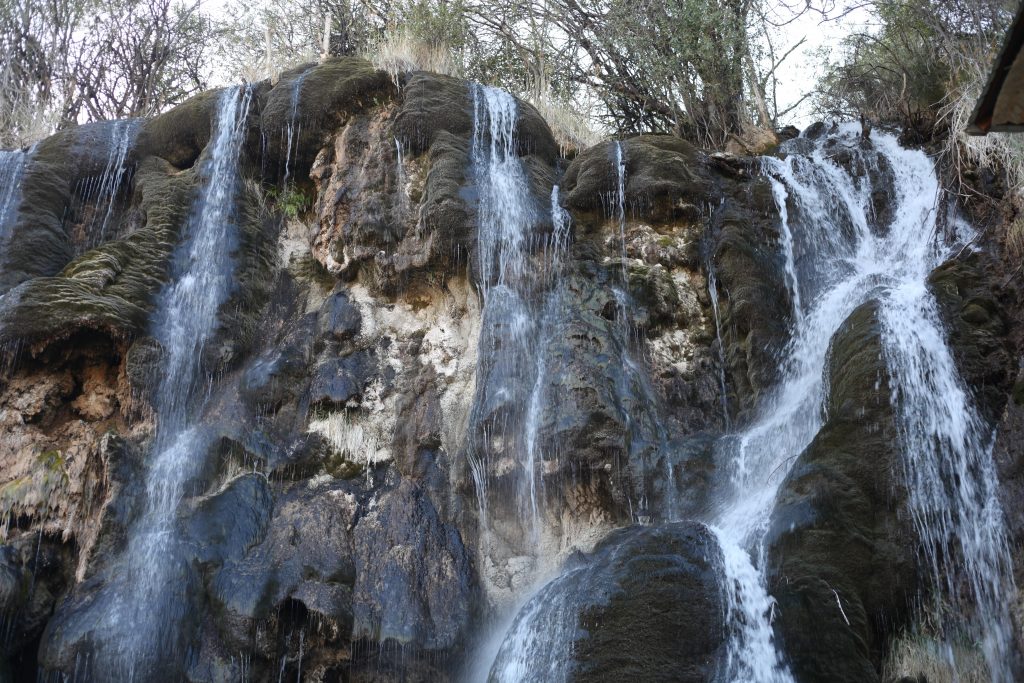
Seven treasures of Tajikistan – the project of Republican public organization «Tourism Development Center» which purpose became to search of seven unique of historical – architectural and natural monuments of Tajikistan, and also attention attraction to restoration and preservation of the unique historical-architectural and natural objects which are settling down on territory of the country.



